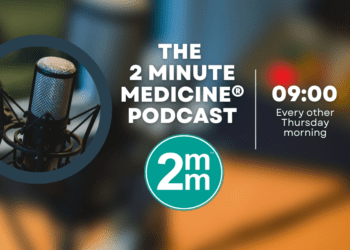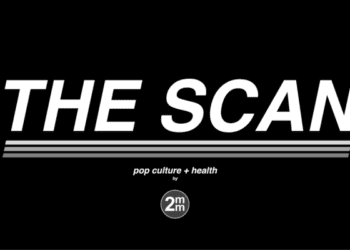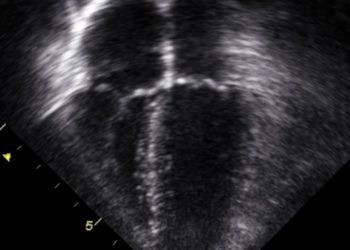The CURB-65 score: Risk stratifying patients with community-acquired pneumonia [Classics Series]
1. Patients with community-acquired pneumonia (CAP) can be stratified into mortality risk groups using a five-point score.
2. One point is awarded for each of the following on initial presentation: Confusion, Urea >7 mmol/L, Respiratory rate >30/min, low systolic (<90 mm Hg) or diastolic (<60 mm Hg) Blood pressure, age >65 years.
3. Patients who receive a score of ≥3 are at a high-risk of mortality (>19%) and should be treated in hospital.
Original Date of Publication: May 2003
Study Rundown: The CURB-65 score was developed as a simple five-point clinical tool for risk stratifying patients presenting with community-acquired pneumonia. Patients with a score of 0-1 may suitable for home management (i.e., low-risk). Patients with a score of 2 may require a short inpatient stay (i.e., intermediate-risk), while those with scores ≥3 should be managed in hospital (i.e., high-risk). Compared to the 20-variable Pneumonia Severity Index (PSI), the CURB-65 score is much easier to remember and apply clinically. In the CURB-65 score, one point is awarded for each of the following: confusion, urea >7mmol/L, respiratory rate >30/min, low systolic (<90 mmHg) or diastolic (<60 mm Hg) blood pressure, and age >65 years on initial assessment. This prospective cohort study describes how the score was derived and validated. In summary, the CURB-65 score is a simple tool to aid clinical decision-making in stratifying patients presenting with community-acquired pneumonia into low-, intermediate-, and high-risk groups in terms of mortality, thereby assisting in management decisions.
In Depth [prospective, cohort]: Data from 1,068 adult patients admitted with CAP in three prospective studies (conducted in the UK, New Zealand, and the Netherlands) were amalgamated. The main outcome measure was 30-day mortality. The dataset was divided into an 80% derivation cohort and a 20% validation cohort. Based on the modified British Thoracic Society (mBTS) assessment tool, the association between the “CURB” score and 30 day-mortality was examined, and prognostic variables were elucidated, including newly identified independent factors separate from CURB. Prognostic features not readily available during an initial hospital assessment were excluded from the clinical prediction rule for practical relevance. The CURB-65 (a six-point score from 0 to 5, one point for each variable present) enabled patients to be stratified according to mortality risk. The score involved one point for each of Confusion, Urea >7 mmol/L, Respiratory rate >30/min, low systolic (<90 mm Hg) or diastolic (<60 mm Hg) Blood pressure, and age >65 years on initial patient assessment. All results were tested against the aforementioned validation cohort, which confirmed the increasing mortality pattern.
|
CURB-65 score |
Mortality risk |
|
0 |
0.7% |
|
1 |
3.2% |
|
2 |
3% |
|
3 |
17% |
|
4 |
41.5% |
|
5 |
57% |
Image: PD
©2012-2014 2minutemedicine.com. All rights reserved. No works may be reproduced without expressed written consent from 2minutemedicine.com. Disclaimer: We present factual information directly from peer reviewed medical journals. No post should be construed as medical advice and is not intended as such by the authors, editors, staff or by 2minutemedicine.com. PLEASE SEE A HEALTHCARE PROVIDER IN YOUR AREA IF YOU SEEK MEDICAL ADVICE OF ANY SORT.







